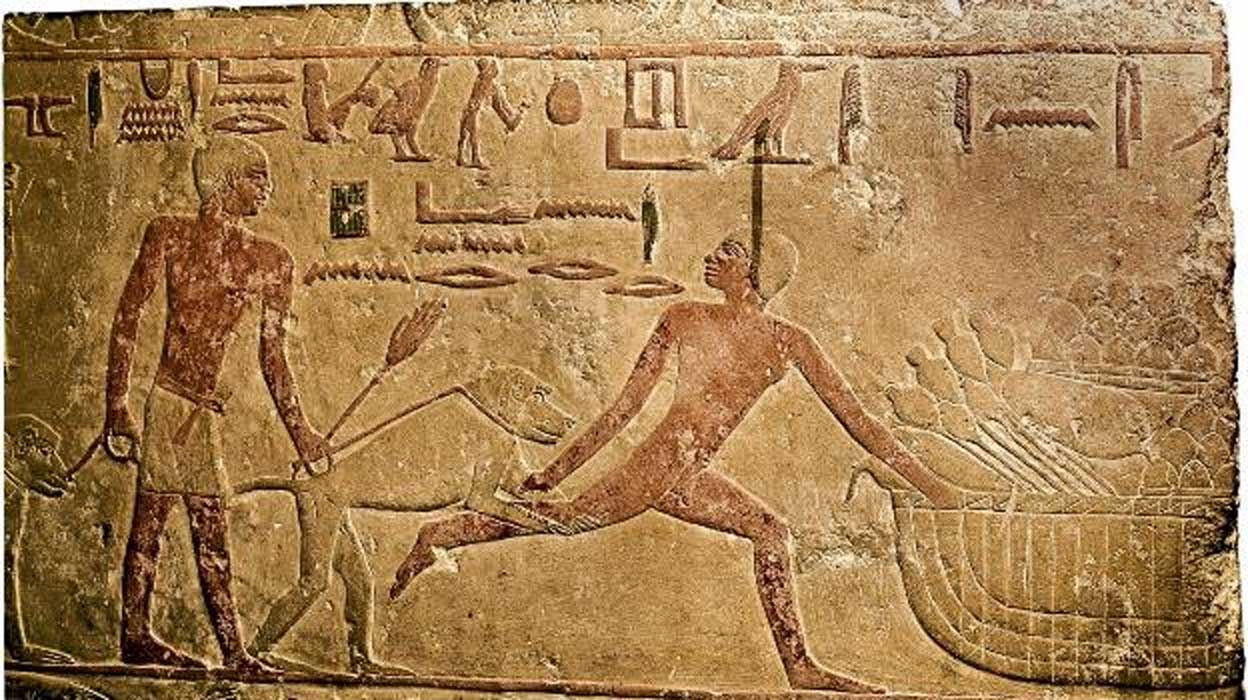
The ancient Egyptians were renowned for their worship of animals, and one of these was the baboon. In ancient Egyptian mythology, baboons are best known for their association with Thoth, the god of wisdom. In addition to their role in mythology, baboons also had a place in the society of ancient Egypt. They are commonly known to have been kept as pets, and mummified remains of these creatures have been discovered by archaeologists. In addition, baboons (or monkeys) have also been shown in Egyptian art to be participating in various human activities, including dancing and playing musical instruments, picking fruit, making wine and beer, and even catching criminals.
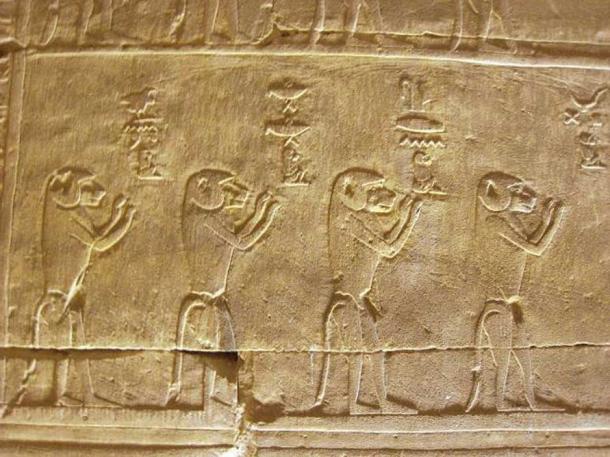
Baboons… bearing baboons. (Karen Green/ CC BY SA 2.0 )
Connection to the Gods
During the Old Kingdom, Hamadryas baboons ( P. hamadryas ) and olive baboons ( P. anubis ) could still be found in the southern parts of Upper Egypt. By the time of the Middle Kingdom, however, it is likely that these animals were no longer indigenous to Egypt. During the New Kingdom, there is evidence that baboons were being imported from the south, either from Nubia, or from the land of Punt.
During the Pre-Dynastic period , a certain god by the name of Baba / Babi was worshipped. The name of this god may be translated as ‘Bull of the Baboons’, and it was depicted as a baboon. It has been postulated that this may be the origin of the word ‘baboon’ itself. By the time of the Old Kingdom, however, the baboon became connected with Thoth, the ancient Egyptian god of wisdom. The association between the baboon and the god of wisdom was made perhaps because the former was perceived to be an intelligent animal.
As Thoth was the patron god of scribes, baboons, being his sacred animal, have often been depicted alongside people of this profession. Thoth was also believed to be a lunar god, and because of that, baboons are sometimes depicted with a crescent moon on their heads. This, in turn, may have led to the association of the baboon with another moon god, Khonsu. This is evident at the Temple of Khonsu in Thebes, where statues of the god in his baboon form can be found in front of the temple complex.
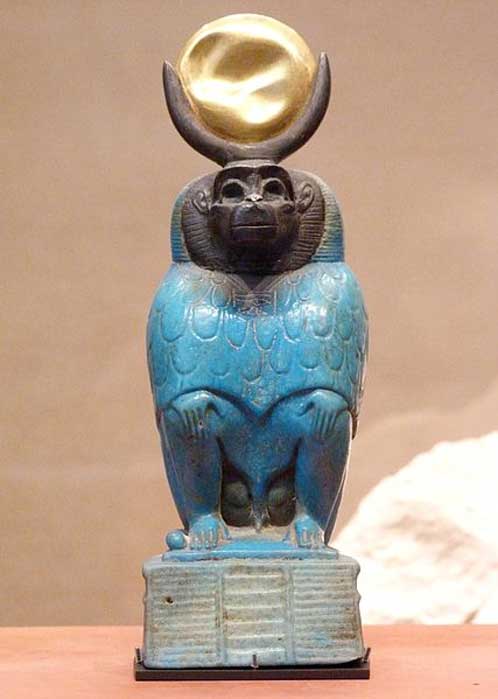
Thoth as a baboon. Offered by a man named Horhetep. Ptolemaic Egypt, circa 332-30 BC Faience, gold and silver. ( CC BY SA 3.0 )
Yet another god linked with baboons is Re, the sun god. The ancient Egyptians observed that baboons would bark at the rising sun, and this was turned into images of baboons with raised arms in the act of worshipping the sun. Lastly, one of the Four Sons of Horus, Hapy, is believed to have had a baboon head. This god was in charge of protecting the lungs of deceased individuals.
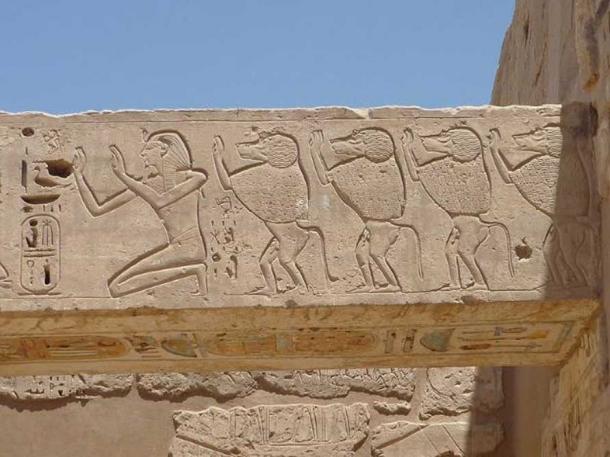
Wall relief of Ramses III and baboons, mortuary temple of Ramses III, Medinet Habu, Theban Necropolis, Egypt. (Rémih/ CC BY SA 3.0 )
Special Roles of Baboons in Egyptian Society
As sacred animals, baboons were kept in temples, and cared for by their priests. Nevertheless, they were also kept as pets by those who could afford them, though for largely ritualistic purposes. Still, such pets were not always treated well by their owners. In Hierakonpolis, for instance, archaeologists have discovered a cemetery with the remains of various animals, including baboons, that were once kept as pets. The bones of the baboons suggest that they had been beaten repeatedly whilst they were alive. This cemetery is about 5000 years old, and dates to the end of the Pre-Dynastic period / the beginning of the Early Dynastic period. Therefore, it has been suggested that at this point of time, the ancient Egyptians were only beginning to learn how to keep animals as pets, and the beatings were meant to keep the baboons in line. As the Egyptians became better handlers, fewer beatings were administered to their pets, as seen in the remains of baboons from later periods.
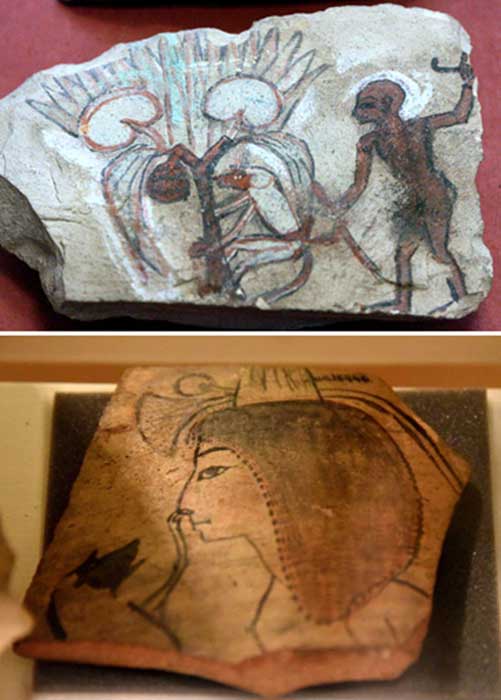
Top: Monkey climbing in a fruited-palm tree, and master(?) ( CC BY SA 2.0 ) Bottom: Pottery shard showing a monkey scratching a girl’s nose. 20th Dynasty. ( CC BY SA 4.0 )
In some works of ancient Egyptian art, baboons (or monkeys) are shown engaging in human activities. Some of these, like harvesting fruits from tall trees, could be plausible. In some parts of the world, monkeys are known to be trained to harvest fruits. In a tomb from the 12th Dynasty, baboons are even shown to be competing with humans for the collection of fruit.
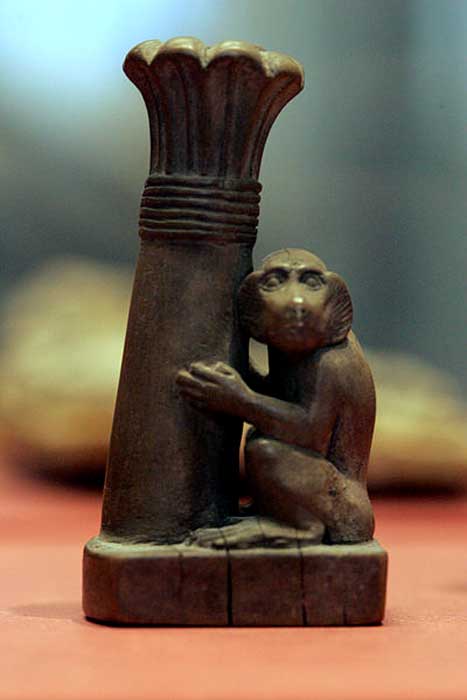
Kohl box featuring a monkey holding a palm tree. ( CC BY SA 2.0 )
Other baboon jobs, such as helping with alcohol production or rigging boats, seem a little more fantastical. Nevertheless, given that baboons were considered to be intelligent animals, it would not then be too surprising if the ancient Egyptians imagined baboons could do such activities.